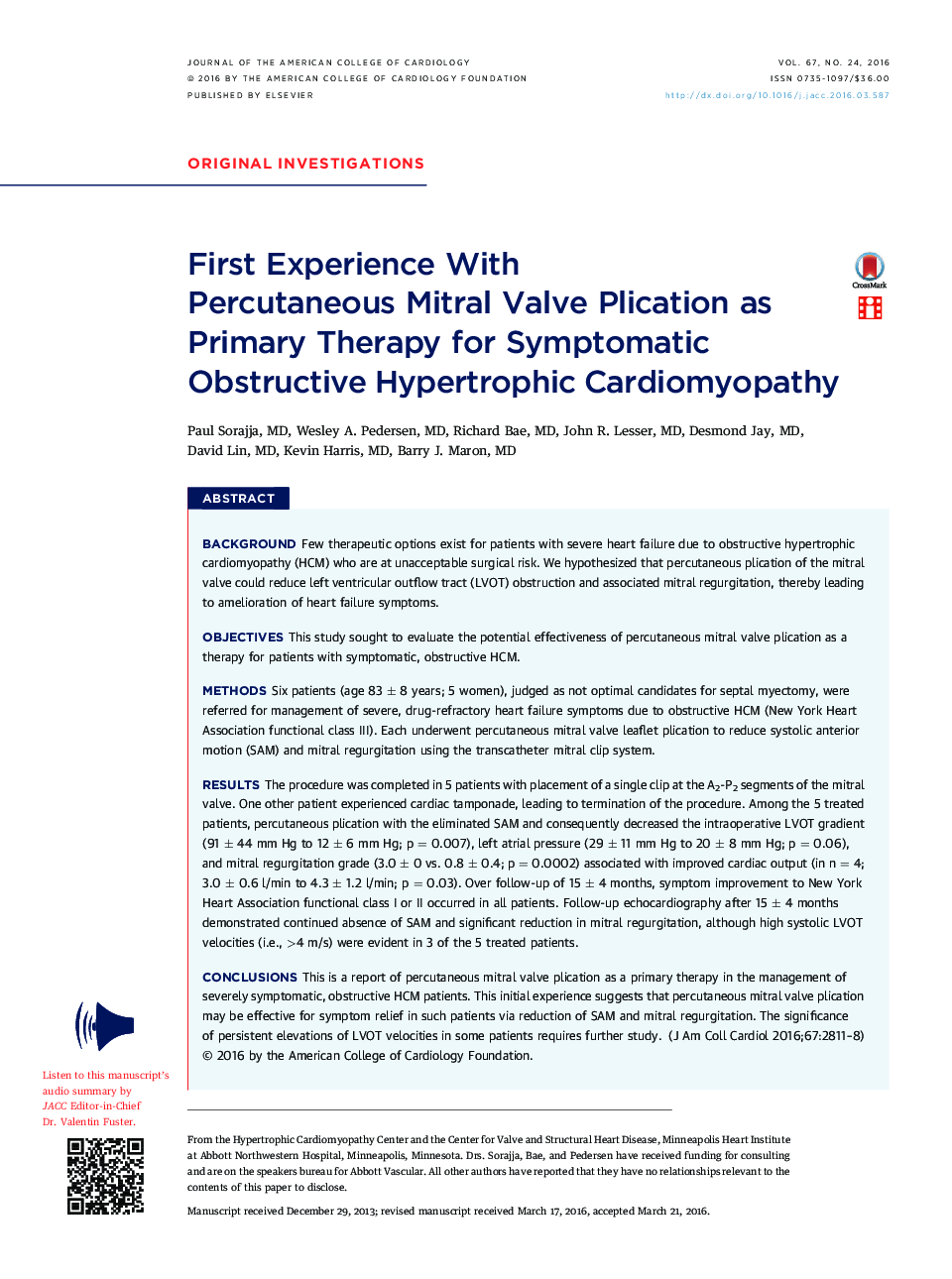| Article ID | Journal | Published Year | Pages | File Type |
|---|---|---|---|---|
| 2942941 | Journal of the American College of Cardiology | 2016 | 8 Pages |
BackgroundFew therapeutic options exist for patients with severe heart failure due to obstructive hypertrophic cardiomyopathy (HCM) who are at unacceptable surgical risk. We hypothesized that percutaneous plication of the mitral valve could reduce left ventricular outflow tract (LVOT) obstruction and associated mitral regurgitation, thereby leading to amelioration of heart failure symptoms.ObjectivesThis study sought to evaluate the potential effectiveness of percutaneous mitral valve plication as a therapy for patients with symptomatic, obstructive HCM.MethodsSix patients (age 83 ± 8 years; 5 women), judged as not optimal candidates for septal myectomy, were referred for management of severe, drug-refractory heart failure symptoms due to obstructive HCM (New York Heart Association functional class III). Each underwent percutaneous mitral valve leaflet plication to reduce systolic anterior motion (SAM) and mitral regurgitation using the transcatheter mitral clip system.ResultsThe procedure was completed in 5 patients with placement of a single clip at the A2-P2 segments of the mitral valve. One other patient experienced cardiac tamponade, leading to termination of the procedure. Among the 5 treated patients, percutaneous plication with the eliminated SAM and consequently decreased the intraoperative LVOT gradient (91 ± 44 mm Hg to 12 ± 6 mm Hg; p = 0.007), left atrial pressure (29 ± 11 mm Hg to 20 ± 8 mm Hg; p = 0.06), and mitral regurgitation grade (3.0 ± 0 vs. 0.8 ± 0.4; p = 0.0002) associated with improved cardiac output (in n = 4; 3.0 ± 0.6 l/min to 4.3 ± 1.2 l/min; p = 0.03). Over follow-up of 15 ± 4 months, symptom improvement to New York Heart Association functional class I or II occurred in all patients. Follow-up echocardiography after 15 ± 4 months demonstrated continued absence of SAM and significant reduction in mitral regurgitation, although high systolic LVOT velocities (i.e., >4 m/s) were evident in 3 of the 5 treated patients.ConclusionsThis is a report of percutaneous mitral valve plication as a primary therapy in the management of severely symptomatic, obstructive HCM patients. This initial experience suggests that percutaneous mitral valve plication may be effective for symptom relief in such patients via reduction of SAM and mitral regurgitation. The significance of persistent elevations of LVOT velocities in some patients requires further study.
